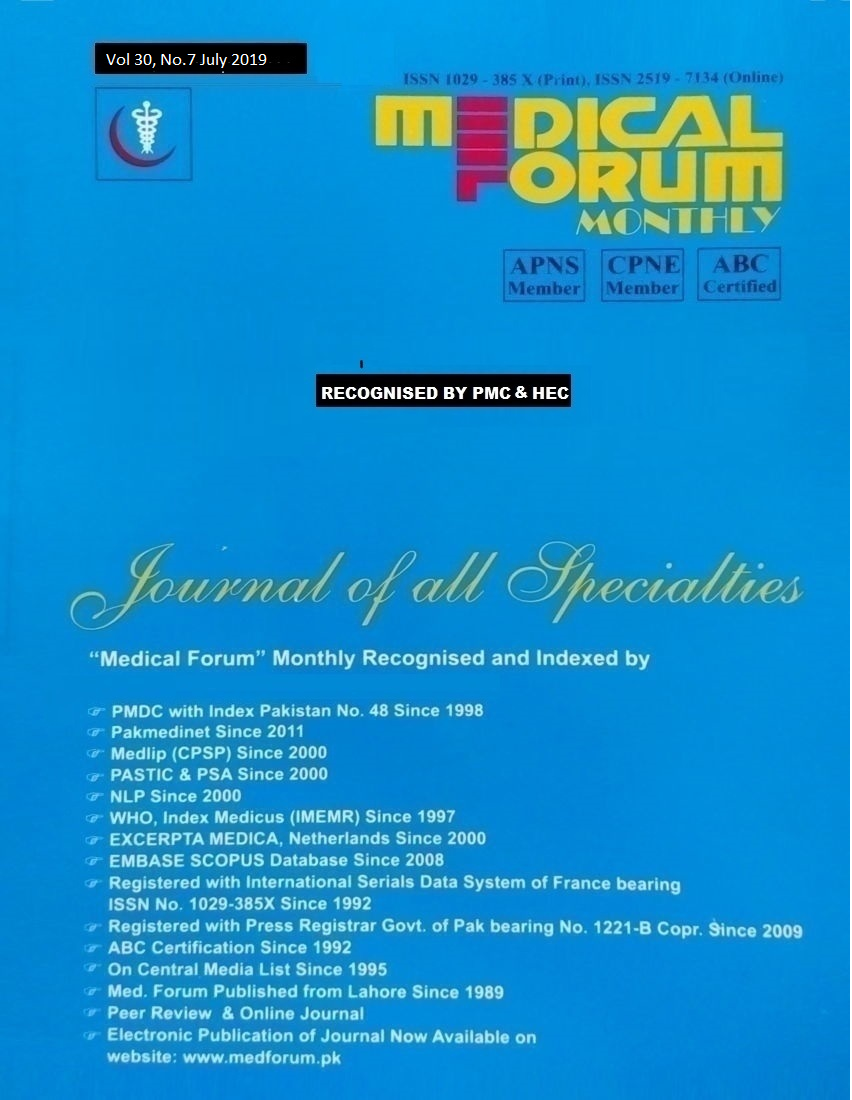
25. Postmortem Interval Estimation by Sturner’s Equation Based Upon Vitreous Potassium Level
Nasreen Akhtar1, Riasat Ali2, Wardah Anwar2, Anam Iqbal1 and Arif Rashid Malik2
ABSTRACT
Objective: To determine the level of postmortem vitreous Potassiumand to correlate it withknown postmortem interval by using Sturner’ equation and develop a new equation if the above mentioned equation does not work in our set up.
Study Design: Confirmatory Analytical study
Place and Duration of Study: This study was conducted at the medicolegal autopsies in the Mortuary of King Edward Medical University, Lahore and samples were analyzed in the Pathology Department of same institution from December 2012 to May 2013.
Materials and Methods: 102 samples were obtained just before the commencement of autopsy. Cases with known cause and time of death were included in the study. Head injury, unknown, putrefied and poisoning cases were not included. Sample collection took 06 months. Relevant information were collected on a detailed Proforma for
each case.
Results: Linear correlation between vitreous potassium level and time since death(r=0.428, P<0.001) was significant. An Ordinary Regression equation was developed which measured more accurate PMI as compared to other well-known equations and seemed to be a more appropriate model for our settings.
Conclusion: Our analysis has shown that the formula (equation number 5) developed in this research is comparatively more helpful for our setup than other well-known formulae for the estimation of PMI.
Key Words: Postmortem Interval (PMI), Vitreous Humor, Potassium, Ordinary Regression Equation, Inverse Regression Equation, Sturner’s equation.
Citation of articles: Akhtar N, Ali R, Anwar W, Iqbal A, Malik AR. Postmortem Interval Estimation by Sturner’s Equation Based Upon Vitreous Potassium Level. Med Forum 2019;30(7):100-104.
